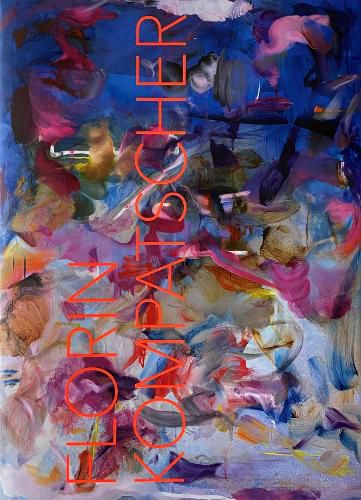Readings Newsletter
Become a Readings Member to make your shopping experience even easier.
Sign in or sign up for free!
You’re not far away from qualifying for FREE standard shipping within Australia
You’ve qualified for FREE standard shipping within Australia
The cart is loading…






The seemingly random and spontaneous lines and formations in the paintings of Florin Kompatscher are reminiscent of an airy constellation of individual, yet corresponding comic panels. Recently he has taken this to the extreme and developed it into a spatially perceptible, accessible construct in the world of symbols–from panel painting and wall painting to sculpturally formed lineatures. Yet another explorer of the phenomena of a visual subjectivity is Albert Oehlen–both painters, Kompatscher and Oehlen, know and appreciate each other, and Oehlen likewise juxtaposes the invariably dominant abstraction of his painting with isolated figurative elements. Both thus abrogate a tradition that saw abstraction in strict opposition to illusionistic representationalism in painting. Oehlen coined the wonderful term of post-non-representationality for this; with Kompatscher this can be expanded to the even more paradoxical concept of post-pre-representationality. Or simply said, according to Merleau-Ponty: Nothing is more difficult than to know precisely what we see.
$9.00 standard shipping within Australia
FREE standard shipping within Australia for orders over $100.00
Express & International shipping calculated at checkout
The seemingly random and spontaneous lines and formations in the paintings of Florin Kompatscher are reminiscent of an airy constellation of individual, yet corresponding comic panels. Recently he has taken this to the extreme and developed it into a spatially perceptible, accessible construct in the world of symbols–from panel painting and wall painting to sculpturally formed lineatures. Yet another explorer of the phenomena of a visual subjectivity is Albert Oehlen–both painters, Kompatscher and Oehlen, know and appreciate each other, and Oehlen likewise juxtaposes the invariably dominant abstraction of his painting with isolated figurative elements. Both thus abrogate a tradition that saw abstraction in strict opposition to illusionistic representationalism in painting. Oehlen coined the wonderful term of post-non-representationality for this; with Kompatscher this can be expanded to the even more paradoxical concept of post-pre-representationality. Or simply said, according to Merleau-Ponty: Nothing is more difficult than to know precisely what we see.